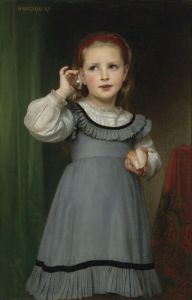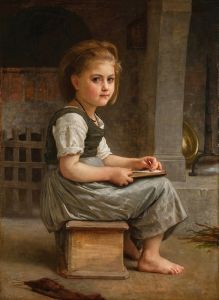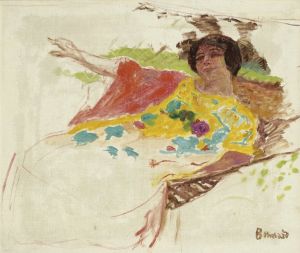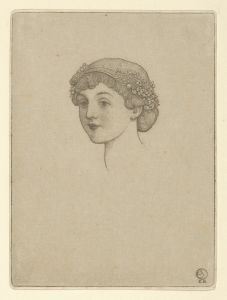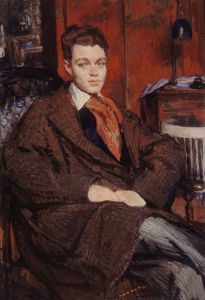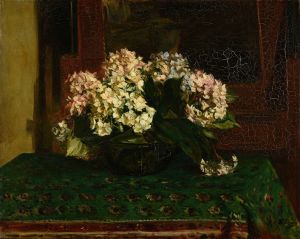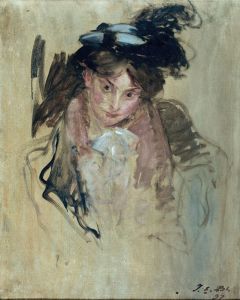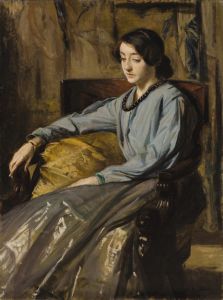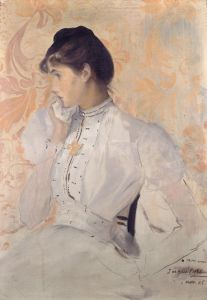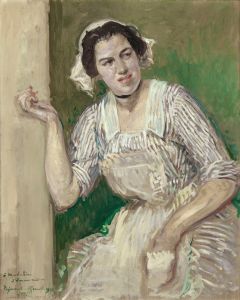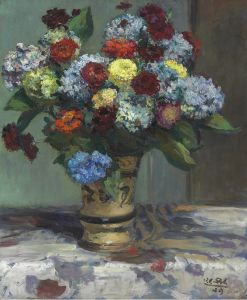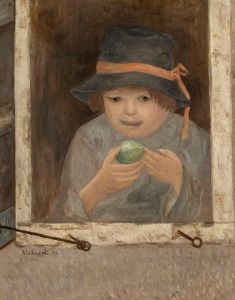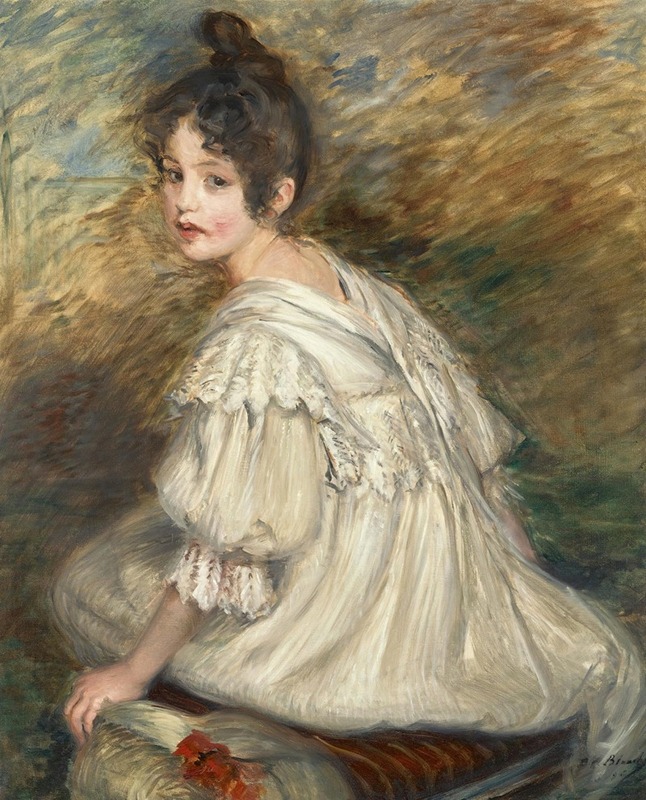
Fille à la robe blanche
A hand-painted replica of Jacques-Émile Blanche’s masterpiece Fille à la robe blanche, meticulously crafted by professional artists to capture the true essence of the original. Each piece is created with museum-quality canvas and rare mineral pigments, carefully painted by experienced artists with delicate brushstrokes and rich, layered colors to perfectly recreate the texture of the original artwork. Unlike machine-printed reproductions, this hand-painted version brings the painting to life, infused with the artist’s emotions and skill in every stroke. Whether for personal collection or home decoration, it instantly elevates the artistic atmosphere of any space.
Jacques-Émile Blanche was a prominent French artist known for his portraits and contributions to the art world during the late 19th and early 20th centuries. Born in Paris in 1861, Blanche was part of a well-connected family that provided him with access to many influential figures of his time. He was trained under the guidance of Henri Gervex and Ferdinand Humbert, which helped him develop a style that was both traditional and modern, capturing the essence of his subjects with a keen psychological insight.
One of Blanche's notable works is "Fille à la robe blanche" (Girl in a White Dress). This painting exemplifies Blanche's skill in portraiture, showcasing his ability to convey the personality and mood of his subjects through careful attention to detail and composition. The painting features a young girl dressed in a white gown, a common theme in Blanche's work, where he often depicted individuals from his social circle or those who were part of the cultural elite.
Blanche's portraits are characterized by their elegant simplicity and the subtle use of color and light. In "Fille à la robe blanche," the white dress serves as a focal point, drawing the viewer's attention to the subject while also highlighting Blanche's mastery of texture and form. The use of white can symbolize purity and innocence, themes that are often explored in portraiture of young women and children.
The background of the painting is typically understated, allowing the viewer to focus entirely on the subject. This approach is consistent with Blanche's style, where the emphasis is placed on the sitter's expression and posture, capturing a moment of introspection or quietude. Blanche's ability to portray the inner life of his subjects is one of the reasons his work remains appreciated today.
Throughout his career, Jacques-Émile Blanche painted numerous portraits of notable figures, including writers, artists, and musicians. His connections with the intellectual and artistic circles of Paris allowed him to create a body of work that serves as a historical record of the cultural milieu of his time. His portraits are not only artistic achievements but also valuable documents of the personalities who shaped the cultural landscape of the era.
"Fille à la robe blanche" is a testament to Blanche's enduring legacy as a portrait artist. His work continues to be studied and admired for its technical proficiency and its ability to capture the essence of his subjects. While specific details about the identity of the girl in the painting or the circumstances of its creation may not be widely documented, the painting remains an important example of Blanche's contribution to the art of portraiture.
Blanche's influence extended beyond his paintings; he was also a writer and art critic, contributing to the discourse on art and culture in France. His insights and critiques were informed by his deep understanding of the artistic process and his engagement with the art community.
In summary, "Fille à la robe blanche" by Jacques-Émile Blanche is a significant work that reflects the artist's skill in capturing the subtleties of human expression and the elegance of his time. Through his portraits, Blanche offers a glimpse into the world of the French elite, preserving the likenesses and personalities of those who were part of his life and the broader cultural scene.





